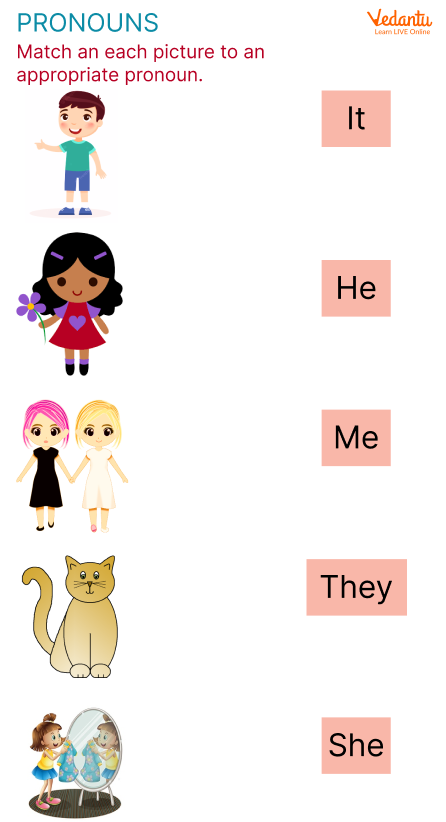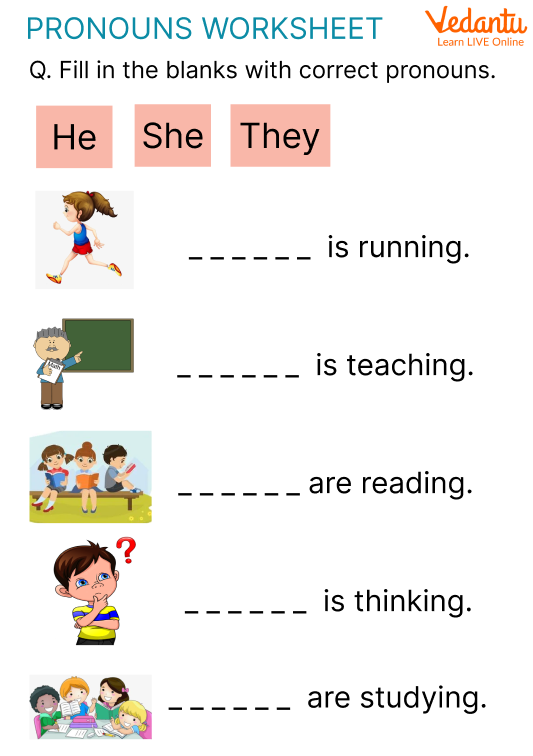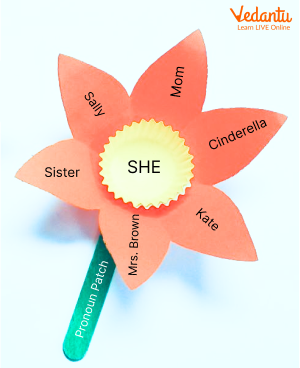




A Brief Introduction and Activities for Pronouns
Read the following lines. ‘Meena is a sweet girl. Meena loves Meena’s parents and respects Meena’s parents. Meena and Meena’s brother go to school together.’ Doesn’t this seem a bit boring to you? Now read this. ‘Meena is a sweet girl. She loves her parents and respects them. Meena and her brother go to school together.’ Doesn’t this sound much better? That’s because instead of repeatedly using the same proper noun Meena, we have replaced it with the appropriate pronouns.
If you are looking forward to introducing pronouns to your kids in a simple yet comprehensive way, look no further! We have curated a list of some fun and engaging activities for pronouns that parents and teachers can employ to instil a sense of better sentence-building power with the use of pronouns.
What are Pronouns?
Before we move to the fun activities for pronouns, let us first understand the meaning of pronouns. Pronouns are words that we use instead of nouns or naming words. But why should we use pronouns? Pronouns help us make better sentences and tell amazing stories. For example, Ronald loves playing football. He plays as a goalkeeper. Here, we have replaced the noun ‘Ronald’ in the second sentence with the pronoun ‘he’ to improve our sentence.
To develop your writing and speaking skills, you need to ace your lesson on pronouns. Some of the common pronouns are I, me, you, your, he, him, his, she, her, it, we, us, our, you, your, they, them, their, etc. Some of these pronouns are used for one person or thing and some are used for more than one person. Let’s take a look at the table below to understand this better.
4 Fun Activities for Pronouns
1. Matching Activity
Before you delve into teaching the use of pronouns in sentences, it is important that your child or student should identify which pronouns are used for which person or thing. A noun and pronoun matching activity, in this case, would be really helpful.
On an A-4 sheet of paper, write the nouns on one side and the pronouns on the other side. Make sure the order is jumbled.
You could also draw or stick pictures of a girl, boy, a group of people, an animal, or an object to make it more interesting.
Ask your child to use a pencil to match the nouns with the correct pronouns. Help them when they get stuck.
Here is a worksheet that you could download or refer to to create your own.

Pronoun matching worksheet
2. Fill in the Pocket
For the next activity, you can introduce the use of pronouns in sentences. All you need is a chart, a transparent sheet of paper, some markers, glue or tape, and flashcards.
In a chart, write a few simple sentences. However, leave blanks in the place of pronouns.
Make see-through pockets on the blank places using a transparent sheet of paper and tape or glue.
Write the pronouns on the flashcards using markers.
Ask the students or your child to insert the correct pronoun flashcards into the blank pockets.
You could refer to the worksheet below while preparing the activity.

Fill in the blanks worksheet
3. Reading and Marking Activity
It is often said that when children see and hear a thing, they remember it better. Hence, to ensure that your child or student has not only learnt about pronouns but also applies or identifies them, reading stories is one of the most effective activities. Stories have several characteristics, hence many opportunities to identify pronouns.
Read your child’s favourite fairy tales or animal fables along with them.
Ask them to take a sheet of paper and two colour pencils or sketch pens.
Make a table consisting of two columns for them, like the one shown above. The headings can be one person/things and many persons/things.
When reading the story together, ask them to note down the various pronouns they come across in the story on the sheet of paper using their colour pencils or sketch pens.
Alternatively, you can also ask them to circle the pronouns in the book itself using two different colour pencils, one for each category.
4. Craft and Pronouns
In order to make learning fun and creative, you could indulge your child in this activity. You would require colourful sheets of paper, a pair of scissors, glue, and markers.
Draw and cut out a flower from the colourful sheets of paper. Make sure that the petals, the centre of the flower, and the stem are of different colours.
Use glue to stick all the parts together.
At the centre of the flower, write a pronoun. For example, she.
Ask your kid to write the names of all females they can remember on the petals and stem. For example, mother, sister, their female teacher, or friend.

A paper flower craft to learn pronouns
Conclusion
We hope these activities for pronouns will come to your aid while you familiarise your child with the grammar lesson of pronouns. The activities will surely solidify the foundation of your child’s grammar knowledge so that when they grow up and learn about the different types of pronouns, they can easily grasp the concepts. To supplement your child’s grammar lessons with more worksheets or teach them another chapter, you can head to our website.
FAQs on Activities for Pronouns: Fun Learning Exercises for Pronouns
1. Is ‘you’ a singular pronoun or a plural pronoun?
‘You’ is both a singular and plural pronoun. The plural form of you is you. ‘You’ can be used to refer to a single person or many people. ‘You’ is the only second-person pronoun (both singular and plural). Let’s look at the below examples for better understanding.
You are going to be my partner for the science project. (Here, ‘you’ refers to just one person that is the partner. Thus, it is a singular pronoun in this case.)
All of you must be present at the debate competition in the school auditorium. (Here, ‘you’ refers to a group of people, which is ‘all’ mentioned in the sentence. Hence, it is a plural pronoun here.)
2. Can ‘it’ be used for both living and non-living things?
Yes, the pronoun ‘it’ can be used for living things such as animals and birds or babies when we do not know about their gender. Moreover, ‘it’ is also used as a pronoun for non-living objects. Let’s use an example each to elaborate further.
The sparrow visits us every morning. It waits patiently for a biscuit piece. (Here, ‘it’ used in the second sentence refers to the bird sparrow, a living creature.)
I can’t find the knife. Do you have it? (Here, the pronoun ‘it’ refers to the knife, a non-living object.)









